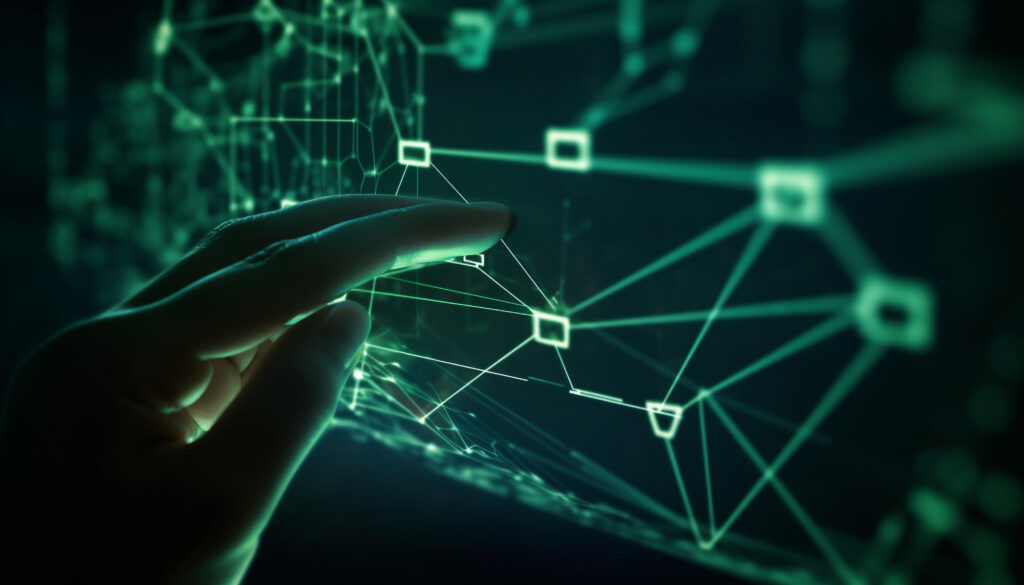Table Of Contents
1. The top Cybersecurity trends
2. Attacks using Ransomware
3. Cyberattacks using artificial intelligence (AI)
4. IoT security risks
5. Cloud are also vulnerable
6. Resolving the cyber threats
The top Cybersecurity trends in 2023
We are occupied in a digital landscape while it undergoes continuous alteration and extensions, remarkably comprised of contemporary technologies. With the vast advancement of technology space for cyberthreats and breaching of data had became common scenario. The change in cybersecurity trends in 2023 makes an increasing number of novel threats and a widening range of potential targets, and there are no indicators that cybercriminals will slow down in 2023.
Cybersecurity has various important parts. Preventive measures come first. To do this, security controls like firewalls, antivirus software, and access controls must be put in place to stop unauthorized access to systems and data. Additionally, it involves routinely patching software and system flaws that attackers might exploit.
Detection is another important aspect of cybersecurity trends in 2023. This involves maintaining an eye out for any suspicious activities on networks and systems, such as attempted unauthorized access or unusual network traffic. Organizations can reduce harm and avoid data loss via early detection of possible threats. Every year, new dangers surface because cybersecurity is a field that is always developing. Organizations and people need to be aware of a few cybersecurity themes as they look ahead to cybersecurity trends in 2023.
Attacks using Ransomware
The ransomware virus targets computer systems and encrypts files, rendering them inaccessible to the user. The attacker demands a ransom in return for the decryption key. The fact that ransomware assaults are so profitable for cybercriminals is one factor contributing to their development. Paying the ransom is frequently significantly less expensive than dealing with the aftermath from a data breach or restoring the system from backups. A ransomware assault that is successful may have negative effects. In addition to the monetary costs of paying the ransom and fixing the system, businesses risk having their reputations ruined and losing customers. Sensitive information may occasionally be stolen and used maliciously.
As per cybersecurity trends in 2023 the organisations must be proactive in enhancing their cybersecurity defences to safeguard against the possibility of ransomware attacks. This entails putting in place reliable backup and recovery procedures, upgrading software and security updates on a regular basis, and training staff members on cybersecurity best practices.
Cyberattacks using artificial intelligence (AI)
Cybercriminals are knowledgeable on current events and are employing artificial intelligence to perform more complex attacks as Chat GPT takes over the internet. AI-powered attacks are more difficult to identify and defend against because they can quickly adapt to shifting settings.
AI-powered attacks can come in a variety of shapes, including phishing emails, ransomware, and con artists. AI, for instance, may be used to produce phishing emails that are incredibly convincing and seem to come from reliable sources, making it simpler for attackers to deceive people into opening dangerous links or installing malware.
As per the cybersecurity trends in 2023, organisations need to be attentive and use cutting-edge cybersecurity technologies and strategies that can identify and address these risks in real time if they want to safeguard themselves against AI-powered cyberattacks. This involves utilising cybersecurity tools powered by AI that can recognise and stop assaults before they cause harm. To teach staff how to spot and report suspicious conduct, organisations should develop security awareness training programmes.
IoT security risks
IoT vulnerabilities are the next topic in cybersecurity that we’ll discuss. Companies are aware of the worry over the security of IoT devices. They might not be entirely aware of all the vulnerabilities that could exist, though. The results could be disastrous if any security flaws are found.
According to data from Oracle, there are already more than 7 billion connected IoT devices, and by 2025, that figure is expected to reach 22 billion. Cybercriminals now have a lot more opportunities to launch attacks because to this expansion.
Contemporary cybersecurity trends in 2023 it is essential to implement strong security measures for IoT systems and devices in order to reduce these threats. This entails putting in place reliable authentication procedures, applying patches and firmware updates on a regular basis, encrypting data both in motion and at rest, maintaining physical security, adhering to best practises and standards, and informing users about IoT security and privacy issues.
Cloud are also vulnerable
Although there are many advantages to cloud computing, there are also new security dangers. Organisations should take appropriate security precautions, such as encryption, authentication, and routine patching, to safeguard networks and data stored in the cloud. There will be a greater need for cloud security solutions as more businesses shift their data and apps to the cloud. Cloud security solutions are made to guard against data breaches and other cyber threats, as well as to prevent unauthorised access to data that is kept in the cloud.
Resolving the cyber threats with the cybersecurity trends in 2023
All things considered, cybersecurity is a vital aspect of contemporary business and personal life. As hackers continue to create new tactics and strategies to exploit weaknesses, it necessitates continual awareness and attention. Individuals and organizations can contribute to ensuring their safety and security in the digital era by remaining educated and adopting preventative measures to safeguard systems and data.
In conclusion, new and growing cybersecurity trends and dangers are predicted for 2023. Organizations must maintain vigilance, keep informed of the most recent cybersecurity technologies and techniques, and make sure that their staff is prepared to identify and respond to possible attacks. Organizations may lessen the risk of cyberattacks and maintain the efficiency of their operations by taking proactive steps to safeguard their systems and data.











